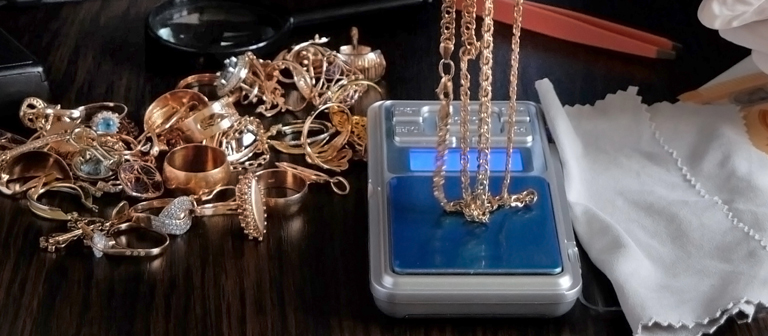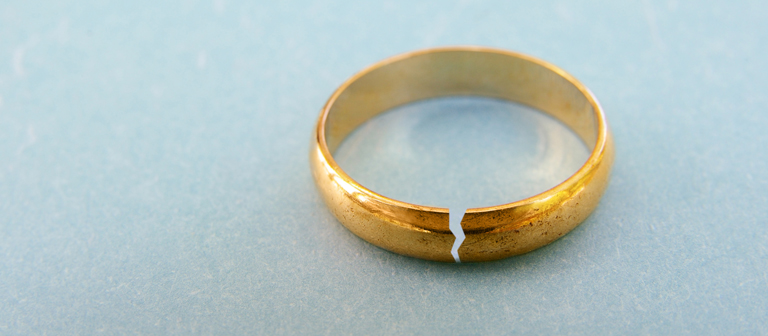
Determining the worth of old gold jewelry depends on several factors and it can be overwhelming to head into a sale without some basic background knowledge about what your gold may be worth. Terms like karat purity, weight, and current market price of gold may seem overwhelming. When you throw in the concepts of design, craftsmanship, or historical significance the factors to consider can be mind boggling. With that in mind, we’d like to briefly explore some of the things that are considered when valuing old gold jewelry and some of the factors that can influence its worth.
1. Karat Purity: When it comes to measuring the purity of gold the common term you may have heard is karats, but what exactly does karat mean? Karat means the purity of the gold itself, which is most often a gold alloy (a blend of gold with the addition of other metals). 24 karats represents pure gold and is not an alloy. However, most gold jewelry is not made of pure gold due to its softness. Instead, it is typically alloyed with other metals to increase durability and strength. Gold jewelry can include 10k (10 parts gold/14 parts alloying metal), 14k (14 parts gold/10 parts alloying metal), 18k (18 parts gold/6 parts alloying metal), and 22k (22 parts gold/2 parts alloying metal). The higher the karat purity, the more valuable the gold jewelry is per gram! You can learn more about gold by reading “What To Know When Considering Gold for Your Engagement Ring”.
2. Weight: The weight of gold jewelry can play a significant role in determining its worth. Gold is typically priced by the gram, so heavier pieces will often fetch higher prices. However, the valuation of gold does not strictly rely on this as a measurement as the karat of gold also comes into play. A heavy weight with a low karat gold may receive the same cost appraisal as a lighter weight of gold that is purer. When assessing the weight of gold jewelry, it’s also essential to use precise and accurate measurements, such as grams or pennyweights (dwt). Jewelers often use precision scales to weigh gold jewelry accurately.

3. Market Price of Gold: Most people know that the price of gold is subject to fluctuations in the global market and can be influenced by factors such as supply and demand, economic indicators, geopolitical events, and currency movements. Gold prices are quoted per troy ounce (31.1 grams) and are updated regularly on financial news websites, gold trading platforms, and precious metal exchanges. The current market price of gold serves as a baseline for valuing old gold jewelry and is also one element in gold valuation.
4. Design and Craftsmanship: Unless you are a jewelry fanatic you may not be up on the value of some jewelry items. As they say, one man’s trash is another man’s treasure. Some old gold jewelry may have additional value due to its design, craftsmanship, or aesthetic appeal. Antique or vintage pieces, for example, may bring higher selling prices due to their rarity or historical significance. Jewelry with intricate detailing, unique gemstone settings, or renowned designer labels may also be more valuable than mass-produced pieces. What you may not know about your old gold jewelry could just add significant value to its worth! A trusted jeweler that is also knowledgeable about buying and selling gold can provide this information to you and you may find out the piece is worth more intact than it would be selling your gold alone.
5. Condition: When it comes to selling gold jewelry intact as a vintage item, the condition of old gold jewelry can impact its worth. Well-maintained pieces in excellent condition will typically fetch higher prices than damaged or worn-out jewelry. Factors such as scratches, dents, tarnish, missing gemstones, or signs of repair can affect the value of gold jewelry. It’s essential to assess the condition of old gold jewelry accurately and will help you maintain a realistic expectation of the value your gold jewelry may have. Well-maintained pieces in excellent condition will typically sell at higher prices than damaged, worn-out, or tarnished jewelry since there will be less involved in reselling them. Some common factors that affect the condition, such as scratches, dents, missing gemstones, or signs of repair can detract from the value of old gold jewelry. When appraising old gold jewelry, the condition will be factored into the final valuation.

6. Gemstones and Additional Materials: Old gold jewelry may contain gemstones, diamonds, or other precious materials that contribute to its overall value! When appraising gold jewelry, it’s important to consider the quality, size, and type of gemstones present. High-quality gemstones, such as diamonds, rubies, emeralds, or sapphires, can significantly enhance the value of gold jewelry while some jewelry can also be made with other precious metals, such as platinum or silver, and this may also contribute to some added worth.
Whether your old gold jewelry ends up being priced solely based on the trade in value of the gold or whether it is purchased as a stand-alone vintage piece, we hope this guide helps you navigate through the process of selling your old unwanted jewelry. We are always looking to help educate our customers and provide a trusted guide into the personal decision and process of selling their old jewelry. Feel free to stop by our Gilbert showroom to speak with an expert anytime!

